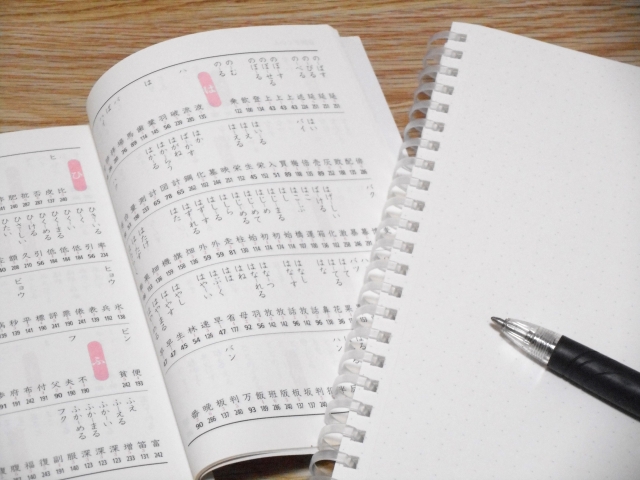文脈で読みが変わる日本語
日本語には、同じ漢字であっても文脈や使われ方によって読み方が変わる言葉が多く存在します。これは日本語学習者だけでなく、日本人にとっても奥深く、興味深い特徴です。AI でもよく読みまちがえます。以下は、代表的な例をご紹介します。
1. 生

sign up for the Japanese-Online Newsletter
__..-・**・-..__..-・**・-.._ あいうえお かきくけこ さしすせそ たちつてと なにぬねの はひふへほ まみむめも やいゆえよ らりるれろ わゐうゑを ん __..-・**・-..__..-・**・-.._
#JapaneseOnline #LearningJapanese #FreeJapaneseLessons #JapaneseVideoLearning #JapaneseAnime #Anime #JapaneseFood #Bloguru
日本語には、同じ漢字であっても文脈や使われ方によって読み方が変わる言葉が多く存在します。これは日本語学習者だけでなく、日本人にとっても奥深く、興味深い特徴です。AI でもよく読みまちがえます。以下は、代表的な例をご紹介します。
1. 生
- なま(未加工)
- 例:「生ビール」「生たまご」
- うまれる(誕生)
- 例:「赤ちゃんが生まれる」
- いきる(存在)
- 例:「人はなぜ生きるのか」
- せい(音読み/語の一部)
- 例:「学生」「生命」
→ 意味も読みも多様で、文脈を読まないと判断が難しい漢字の一つです。
2. 上
2. 上
- うえ:位置
- 例:「棚の上に置く」
- かみ:神聖・目上
- 例:「上座」
- じょう:(音読み/語の一部)
- 「上司」
- あがる・のぼる:動詞形で読む場合
- 例:「階段を上る」「手を上げる」
→ 場所、上下関係、動作など文脈で変化します。
3. 下
3. 下
- した:位置や方向
- 例:「机の下にある」
- しも:上下関係・川の流れなど
- 例:「川下」
- さがる・くだる・おろす:動作・変化
- 例:「熱が下がる」「山を下る」「荷物を下ろす」
→ 対義語「上」と同じく、読みが多く、動詞と名詞で変化します。
4. 私
4. 私
- わたし:最も一般的な一人称
- 例:「私は学生です」
- わたくし:改まった場面や丁寧な言い方
- 例:「私どもがご案内いたします」
→ 会話のフォーマルさによって使い分けられます。
5. 今日
5. 今日
- きょう:本日
- 例:「今日は休みです」
- こんにち:現代・今の時代
- 例:「今日の社会では…」
→ 同じ漢字でも「時間の単位」と「時代の概念」で異なる。
6. 風
6. 風
- かぜ:空気の流れ
- 例:「今日は風が強い」
- ふう:~風(スタイルや様式)
- 例:「和風」「自由奔放な生き方風」
→ 自然現象と概念の違い。
まとめ
このような日本語の面白さを知ることは、語彙力や読解力の向上につながるだけでなく、日本文化の奥深さにも触れることができます。
それでは、また次回のJapanese-Onlineニュースレターでお会いしましょう!ご意見・ご感想もぜひお寄せください。
まとめ
このような日本語の面白さを知ることは、語彙力や読解力の向上につながるだけでなく、日本文化の奥深さにも触れることができます。
それでは、また次回のJapanese-Onlineニュースレターでお会いしましょう!ご意見・ご感想もぜひお寄せください。
Same Kanji, Different Readings?
How Context Changes Reading in Japanese
In Japanese, you can read many kanji characters in different ways depending on what context you’re using. This isn’t just a challenge for learners of Japanese—even native speakers find it fascinating and complex. Even AI often gets it wrong!
Here are some common examples:
1. 生
In Japanese, you can read many kanji characters in different ways depending on what context you’re using. This isn’t just a challenge for learners of Japanese—even native speakers find it fascinating and complex. Even AI often gets it wrong!
Here are some common examples:
1. 生
- Nama: Raw/Unprocessed
- Example: 「生ビール」 (nama biru - draft beer), 「生たまご」 (nama tamago - raw egg)
- Umareru: To be born
- Example: 「赤ちゃんが生まれる」 (akachan ga umareru - A baby is born.)
- Ikiru: To live (existence)
- Example: 「人はなぜ生きるのか」 (hito ha naze ikirunoka - Why do people live?)
- Sei: (Part of a word)
- Example: 「学生」 (gakusei - student), 「生命」 (seimei - life)
→ This is one of the most context-dependent kanji, with multiple meanings and readings.
2. 上
2. 上
- Ue: Position
- Example: 「棚の上に置く」 (tana no ue ni oku - Place it on the shelf.)
- Kami: Sacred or superior
- Example: 「上座」 (kamiza - seat of honor)
- Jō: (On'yomi/Part of a word)
- Example: 「上司」 (jōshi - boss/supervisor)
- Agaru / Noboru: When read as a verb
- Example: 「階段を上る」 (kaidan wo noboru - climb the stairs), 「手を上げる」 (te wo ageru - raise one's hand)
→ The reading changes depending on location, hierarchical relationships, or actions.
3. 下
3. 下
- Sita: Position or direction
- Example: 「机の下にある」 (tsukue no sita ni aru - It's under the desk.)
- Shimo: Hierarchical relationships or river flow.
- Example: 「川下」 (kawashimo - downstream)
- Sagaru / Kudaru / Orosu: Action or change
- Example: 「熱が下がる」 (netsu ga sagaru - fever goes down), 「山を下る」 (yama wo kudaru - descend the mountain), 「荷物を下ろす」 (nimotsu wo orosu - unload luggage)
→ Similar to its antonym "上," it has many readings and changes between verbs and nouns.
4. 私
4. 私
- Watashi: The most common first-person pronoun
- Example: 「私は学生です」 (watashi ha gakusei desu - I am a student.)
- Watakushi: A polite form used in formal situations
- Example: 「私どもがご案内いたします」 (watakushi domo ga goannai itashimasu - We will guide you.)
→ The reading changes depending on whether the conversation is formal or casual.
5. 今日
5. 今日
- Kyō: Today (the current day)
- Example: 「今日は休みです」 (kyō ha yasumi desu - Today is a holiday.)
- Konnichi: Modern times or the present era
- Example: 「今日の社会では…」 (konnichi no syakai deha… - In today's society…)
→ Even with the same kanji, the reading differs for "unit of time" versus "concept of an era."
6. 風
6. 風
- Kaze: Air movement
- Example: 「今日は風が強い」 (kyō ha kaze ga tsuyoi - The wind is strong today.)
- Fū: Style or manner
- Example: 「和風」 (wafū - Japanese style), 「自由奔放な生き方風」 (jiyū honpō na ikikata-fū - a free-spirited way of life style)
→ One refers to a natural phenomenon, the other to an abstract concept.
Summary
In Japanese, a kanji’s meaning is directly tied to how someone reads it. Since the same kanji can have multiple readings depending on context and usage, it's crucial to get the full context, not just the individual word. Learning about these interesting aspects of the Japanese language not only helps improve your vocabulary and reading comprehension but also allows you to delve into the depths of Japanese culture.
We look forward to seeing you in the next Japanese-Online newsletter! Please feel free to send us your opinions and feedback.
Summary
In Japanese, a kanji’s meaning is directly tied to how someone reads it. Since the same kanji can have multiple readings depending on context and usage, it's crucial to get the full context, not just the individual word. Learning about these interesting aspects of the Japanese language not only helps improve your vocabulary and reading comprehension but also allows you to delve into the depths of Japanese culture.
We look forward to seeing you in the next Japanese-Online newsletter! Please feel free to send us your opinions and feedback.
sign up for the Japanese-Online Newsletter
__..-・**・-..__..-・**・-.._ あいうえお かきくけこ さしすせそ たちつてと なにぬねの はひふへほ まみむめも やいゆえよ らりるれろ わゐうゑを ん __..-・**・-..__..-・**・-.._
#JapaneseOnline #LearningJapanese #FreeJapaneseLessons #JapaneseVideoLearning #JapaneseAnime #Anime #JapaneseFood #Bloguru

